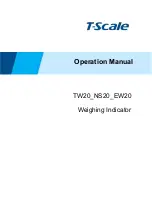
34
Fluoride Ion Selective Electrode User Guide
Temperature Effects
Since electrode potentials are affected by changes in
temperature, samples and standard solutions should be within
± 1 °C (± 2 °F) of each other. At the 10
-3
M fl uoride level,
a 1 °C difference in temperature results in a 2% error. The
absolute potential of the reference electrode changes slowly
with temperature because of the solubility equilibria on which
the electrode depends. The slope of the fl uoride electrode
also varies with temperature, as indicated by the factor S in the
Nernst equation. Values of the Nernst equation for the fl uoride
ion are given in
Table 5
. If the temperature changes, the meter
and electrode should be recalibrated.
Table 5 Theoretical Slope vs. Temperature Values
Temperature (°C)
Slope (mV)
0
- 54.2
10
- 56.2
20
- 58.2
25
- 59.2
30
- 60.1
40
- 62.1
50
- 64.1
The electrode can be used at temperatures from 0 to 100 °C,
provided that temperature equilibrium has occurred. For use
at temperatures substantially different from room temperature,
equilibrium times of up to one hour are recommended.
The electrode must be used only intermittently at solution
temperatures above 80 °C.
Interferences
Most cations and anions do not interfere with the response of
the fl uoride electrode to fl uoride. Anions commonly associated
with fl uoride, such as Cl¯, Br¯, I¯, S0
4
¯
2
, HC0
3
¯, P0
4
¯
3
and acetate,
do not interfere with electrode operation. The OH
-
ion is an
electrode interference, see the
pH Effects
section. Some
anions, such as C0
3
¯
2
or P0
4
¯
3
, make the sample more basic,
which increases the OH
-
interference, but are not direct
electrode interferences. See section on complexation for more
details on interferences resulting from polyvalent cations.











































